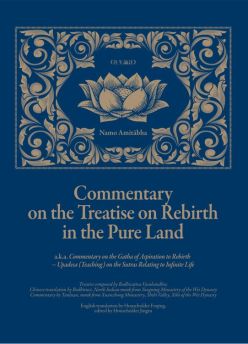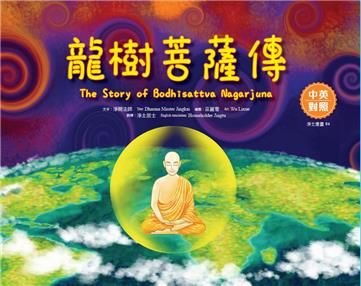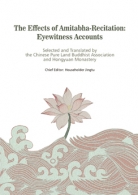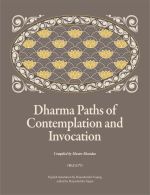A04 Commentary on the Treatise on Rebirth in the Pure Land

Author: Commentary by Tanluan, monk from Xuanzhong Monastery, Shibi Valley, Xihe of the Wei Dynasty
Translator: English translation by Householder Foqing, edited by Householder Jingtu
Publication Date: 2023-01
PDFBrief Introduction
This book has been called the “most remarkable text of the Pure Land School.” Its author was remarkable, the book is remarkable, and its influence is still more remarkable.
First, Bodhisattvas Nagarjuna and Vasubandhu of India composed respectively the “Chapter on the Easy Path” in Exposition of the Ten Stages, and the Gatha of Aspiration to Rebirth -- Upadesa (Teaching) on the Sutras Relating to Infinite Life (a.k.a. Treatise on Rebirth in the Pure Land). These works propagated the unique characteristics and auspiciousness of Amitabha Buddha and the Pure Land.
As the lineage masters of the Madhyamaka and Yogacara schools of Indian Buddhism, the pair not only expounded on the marvels of the Land of Bliss from the viewpoints of different sects. They also vowed to be reborn there, setting personal examples.
According to Madhyamaka principles, all phenomenal forms are empty (unreal). The Yogacara school teaches that all objective conditions are nonexistent. But the two separately delivered the same teaching on Amitabha’s Pure Land -- one that “indicates the direction in space and establishes the phenomenal form” for practitioners to “settle their minds on the objective manifestations.”
Such an insight was both unusual and hard to believe. When first introduced into China, the two expositions seemed not to have received much attention or discussion in Buddhist circles. It wasn’t until the Northern Wei Dynasty that they became popular. That was after Master Tanluan, a man of rare discernment, applied the thought of the Four Treatises School to blend together the compassion and wisdom the two Bodhisattvas applied in creating their works. By citing Nagarjuna’s “Chapter on the Easy Path,” Tanluan made a commentary on Vasubandhu’s Treatise on Rebirth in the Pure Land. In doing so, he practiced himself and converted others, leaving a broad legacy.
Master Yinguang said: “Bodhisattva Vasubandhu wrote extensively to expound the Buddha vehicle. He composed the Treatise on Rebirth according to the Sutras Relating to Infinite Life, by which he introduced the Five Paths of Invocation so people could attain rebirth in the Pure Land eventually.… Master Tanluan wrote his Commentary to provide a detailed explication, revealing fully and thoroughly the vows of Amitabha Buddha and the sincere aspiration of Bodhisattva Vasubandhu. If Tanluan hadn’t understood deeply the Buddha’s mind and possessed unhindered eloquence, how could he have accomplished that?”
This is praise for Master Tanluan’s Commentary. Based on Nagarjuna’s “Chapter on the Easy Path,” it explains Vasubandhu’s Treatise on Rebirth, combines the Pure Land thinking of the two great Indian Bodhisattvas, and lays the foundation for transmission of the correct Pure Land teaching in China. It enabled the completion of the Pure Land School.
Treatise on Rebirth comprises a Gatha of 96 lines, followed by an Explication of 10 chapters. The Gatha expresses Bodhisattva Vasubandhu’s resolve to “single-mindedly entrust his life” to Amitabha Buddha, his faith in, and acceptance of, Amitabha’s deliverance, and his aspiration to rebirth in the Pure Land. The Explication discusses the Five Paths of Invocation and elaborates in detail the causal-ground practice of Amitabha-recitation. Taking the Path of Reflection as core emphasis, it contemplates the splendid features of the Pure Land, its Buddha and its Bodhisattvas. These are also known as the “Three Aspects and 29 Kinds” of splendors.
If we ordinary beings know and believe that all those splendors of the Pure Land were accomplished by Amitabha Buddha for us to be reborn there and accordingly recite his name aspiring to rebirth, then, in our exclusive practice of name-recitation, we would naturally cultivate fully the Five Practices of Invocation. We will be reborn in the Land of Bliss and quickly achieve the fruits of the five merits and virtues, bringing benefits to ourselves as well as others.
The special characteristics that distinguish the Pure Land School from other Buddhist schools (the Sacred Path) are centered on two main themes They are the “splendid merit of Substantive Sustenance and Support,” and the “quick attainment of Buddhahood by relying on the power of Amitabha’s vows.” These themes embody in full the fundamental principles of the Pure Land School -- “the Difficult Path and the Easy Path,” “self-power and other-power,” and “recitation of Amitabha’s name relying on his Fundamental Vow.” They also include “rebirth of ordinary beings in the Pure Land’s Realm of Rewards,” “rebirth assured in the present lifetime,” “non-retrogression achieved in this lifetime,” and “attainment of eligibility for nirvana without eradicating vexations.”
Master Tanluan should be given credit for establishing the Pure Land School’s classification of the Buddha’s teachings. In his Commentary, he inherited and integrated the two trends of thought of Nagarjuna and Vasubandhu. Tanluan also pioneered in Chinese Buddhism the notion of “reciting Amitabha’s name, relying on other-power.” He presented the five-fold essentials to demonstrate the difficulties of “practicing through self-power.” Through the “proof by three vows,” he illustrated the ease of “attaining Buddhahood relying on other-power.” By analyzing the Two Paths and Two Powers, he clarified Amitabha’s Fundamental Vow: Sentient beings who recite his name ten times can be reborn in the Pure Land by relying on Amitabha’s power. Thus Master Tanluan laid the foundations for the formal establishment of the Pure Land School.
Without Master Tanluan, there would not be Masters Daochuo and Shandao. According to the Infinite Life Sutra, the 18th Vow of Amitabha Buddha is the Fundamental Vow of name-recitation relying on other-power. It was spotlighted by Master Tanluan and extensively propagated by Master Shandao. So we know how important Tanluan’s Commentary is among the Pure Land teachings. It can be regarded as equivalent to sutras or upadesas (treatises). All subsequent Pure Land teachers have followed its purport and advocated the deliverance of the Fundamental Vow and the practice of Amitabha-recitation. Without an in-depth understanding of the Commentary, we cannot have a correct perception of the entire Pure Land teaching, much less practice name-recitation for rebirth with real effect.
The Commentary is succinct in style and rich in content. It isn’t easy to understand the literal meanings of its words, let alone its subtle, underlying implications. Also hard to grasp is the true significance of the “Amitabharecitation and aspiration to rebirth” that the patriarchs conveyed and elaborated. Any deficient, superficial or erroneous comprehension would defeat the masters’ compassion in writing the Treatise and the Commentary, and frustrate our own effort to pursue rebirth and Buddhahood.
Seekers can refer to the Sectional Comparative Edition of the Commentary on the Treatise on Rebirth, the Essentials of the Commentary on the Treatise on Rebirth, and the Discourse on the Core of the Commentary on the Treatise on Rebirth. The titles, in Chinese only, are published by the Pure Land Culture and Education Foundation. Besides, the Annotation Translation of the Commentary on the Treatise on Rebirth (in Chinese) is being compiled and edited.
-- Pure Land School Editorial Department
November 15, 2022
Guiding Principles
Faith in, and acceptance of, Amitabha’s deliverance
Single-minded recitation of Amitabha’s name
Aspiration to rebirth in Amitabha’s Pure Land
Comprehensive deliverance of all sentient beings






